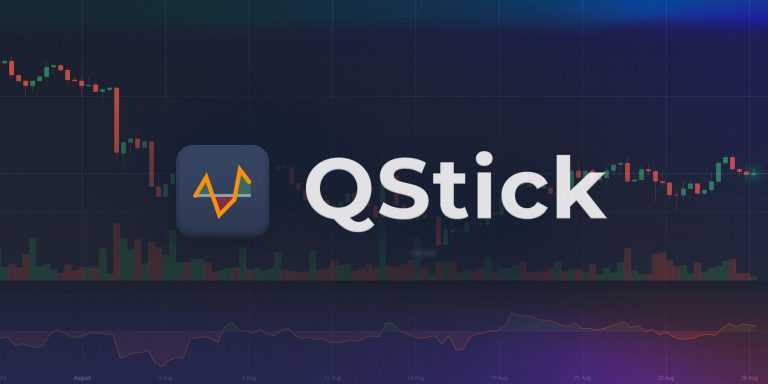Trend-following indicators are numerous, and they all do approximately the same — help you identify the trend and predict its future direction. However, all of them do it slightly differently. You could use QStick if you want an easy to follow, one-line indicator that is easy to follow and really fun to use.
How does it work?
The principle behind the indicator is simple. QStick is a moving average of the difference between the closing and the opening price of the asset. What you get in the end is a curve that goes up or down and can be above or below the zero line. QStick is at zero when closing and opening prices are identical. This is possible in two cases: 1) when the price of the asset has not changed for a given number of periods or 2) when the asset price has changed but then returned to its initial position. When QStick is above the zero line, the closing prices are greater than the opening prices, which is possible during an uptrend. Conversely, QStick is below the zero line when the opening prices are greater than the closing ones, which is a sign of the downtrend.

When QStick is above the zero line and goes up, the uptrend is gaining momentum and the difference between the closing price and the opening price is increasing. When the opposite is true and QStick is below the zero line and goes down, the downtrend is gaining momentum and the difference between the opening price and the closing price is increasing.
All of the above may sound tricky. However, by reading this article and looking at how the indicator works on the platform you will find it much easier to understand.
How to apply in trading?
QStick, being a simple and straightforward trend-following indicator, has merits and demerits of its own. On the one hand, it is easy to set up and understand, its readings are clean, and it can be of great help when used in conjunction with other indicators. As a lagging indicator, it doesn’t make a prediction regarding the future price movement and thus can boast higher accuracy than leading indicators. On the other hand, QStick is hard to use on its own due to lack of predictive capabilities, limited information it provides on the nature of price movements and, as already mentioned, its lagging nature.

So, how would you want to use this indicator in trading? It can be effectively combined with an oscillator and a volume indicator to pinpoint entry points and identify strong positive and negative trends on the market. The oscillator in this case can be used to provide the prime signal, that is later verified with the help of QStick. A volume indicator can help determine the beginning or the end of the current trend. By using several indicators of different types, you can decrease — but not eliminate completely — the risk of a false alarm. Remember that no indicator, including this one, is capable of providing accurate signals 100% of the time. It is your duty, as a trader, to double check all the information you receive from them.
Whatever the purpose you use it for, make sure to double check the signals of QStick on different timeframes or with the help of different indicators.
How to set up?
When working with IQ Option, setting up the QStick indicator is easy. Here’s what you need to do:
1. Click on the ‘Indicators’ button in the left-hand bottom corner of the screen and go to the ‘Trend’ tab,
2. Choose ‘QStick’ from the list of available indicators,
3. Without changing the default settings hit the ‘Apply’ button. Experienced traders can adjust settings to their liking as long as they understand the principles behind the indicator and the way it is calculated.
The indicator is ready to use!
Now when you know how to use QStick in trading and combine it with other indicators, you can proceed to the trading platform to give it a try!


